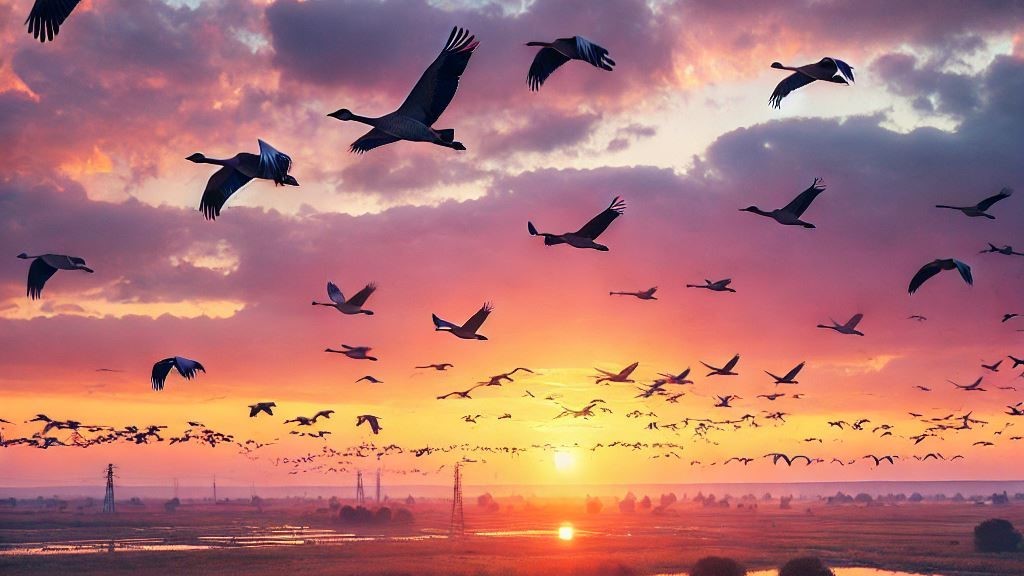The salmon swim upstream for thousands of kilometres just to get home, while we activate the GPS to find the corner bar.
- Migration as a reproductive strategy
- Extraordinary orientation skills
- Preserving routes to protect biodiversity
Migration as a reproductive strategy
The migration of fauna is one of nature’s most fascinating and complex phenomena. Every year, billions of animals undertake long journeys across continents, oceans and deserts. But why do animals migrate?
The main reason is the search for more favourable conditions for their survival. When the seasons change, food availability and temperatures also change, prompting the animals to move to more hospitable locations.
Some, like birds, travel thousands of kilometres to reach warmer areas, while others, like certain land mammals, follow the rain and the awakening of vegetation.
But it is not just a matter of seeking the ideal climate. Migration is also crucial for reproduction. In fact, many species move to safe and protected areas, far from predators, to give birth to their young; like sea turtles, which after years of living in the oceans return to the very beach where they were born to lay their eggs.
Extraordinary orientation skills
Facing a long migratory journey requires extraordinary skills of orientation and adaptation. Some animals rely on the earth’s magnetic field, others follow the sun and the stars, while salmon recognise their native river bysmell.
In the seas, it is the salmon themselves that face raging currents to swim up rivers and lay their eggs, while in the sky, monarch butterflies undertake an epic 4,000-kilometre journey from Canada to Mexico, overcoming natural and climatic obstacles.
One of the most fascinating migrations, European eels make an incredible journey from the Sargasso Sea to the fresh waters of Europe, travelling thousands of kilometres to reach the rivers where they will spend most of their lives before returning to the Atlantic to reproduce.
Every year, swallows travel 10,000 kilometres from Africa to Europe to nest, while the wildebeests of the Serengeti travel 1,800 kilometres in search of green pastures.
But migration is not just a journey, it is a test of endurance that puts the survival of species to the test. Animals have to face lurking predators, extreme weather conditions such as storms or droughts and, increasingly, man-made obstacles created by humans.
Preserving routes to protect biodiversity
Roads, dams and the progressive reduction of natural habitats interrupt millennial routes, threatening the delicate balance of ecosystems.
According to the Small Islands Project, coordinated by ISPRA, only half of the 10 migratory bird species analysed were able to significantly advance their spring migration, a crucial adaptation to cope with climate change.
The study, conducted on 486,622 individuals monitored at 26 ringing stations over 35 years, highlights the difficulties many populations face in adapting to changing ecosystems.
In addition to ensuring the survival of species, migration plays a central role in the ecological balance. It regulates populations, encourages the dispersal of animals and contributes to soil and water fertility, enriching the ecosystems through which it passes.
Protecting migratory routes is essential, not only to protect species on the move, but also to preserve the interconnection between habitats. Each migratory journey tells a story of resilience and adaptability, essential for biodiversity and ecosystem stability.
Acting for their preservation means ensuring a more sustainable future.
Play for the planet!
